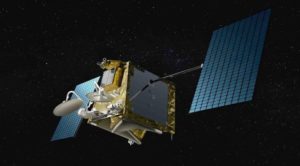
OneWeb, whose goal is to connect everyone everywhere, today announced the details of its Arctic high-speed, low-latency internet service. OneWeb will deliver 375 Gbps of capacity above the 60thparallel North. With service starting in 2020, there will be enough capacity to give fibre-like connectivity to hundreds of thousands of homes, planes, and boats, connecting millions across the Arctic.
The dense, flexible coverage of OneWeb’s polar-orbiting satellites coupled with its high-speed service and low latency capabilities will provide a superior connectivity experience to the 48% of the Arctic currently without broadband coverage. In fact, OneWeb most recently proved its system’s capabilities through HD video streaming tests last month with its first six satellites that showcased extreme low latencies under 40 milliseconds and high-speed services.
A global network, OneWeb’s Arctic service will be deployed significantly earlier and provide 200 times more capacity than planned systems. Substantial services will start towards the end of 2020, with full 24-hour coverage being provided by early 2021, supplying unprecedented blanket coverage to every part of the Arctic Circle.
“Connectivity is critical in our modern economy,” said U.S. Senator for Alaska Lisa Murkowski. “As the Arctic opens, ensuring the people of the Arctic have access to affordable and reliable broadband will make development safer, more sustainable and create new opportunities for the next generation leading in this dynamic region of the globe.”
Adrian Steckel, OneWeb Chief Executive Officer, said: “Connectivity is now an essential utility and a basic human right. Our constellation will offer universal high-speed Arctic coverage sooner than any other proposed system meeting the need for widespread connectivity across the Arctic.”
Home to millions of people, the Arctic is a growing economic hub for many important industries. OneWeb’s seamless global network will facilitate smart shipping, connected aviation, the collection of climate data, and the growth of a digital economy across the region.
The industry advancements will further the Arctic’s growth as a key commercial trade region by drastically improving the region’s safety and communications services, as well as boosting education, healthcare and economic development in remote communities.
OneWeb is already active in Norway and Alaska, where its ground antennas will be fully operational by January 2020 to serve the Arctic region. One of OneWeb’s first operational satellites in orbit is also named Nanuq-Sat after the Inuktitut word for polar bear and was named by children in Anchorage, Alaska.





